Hacking The Bliptronic 5000

Way back in 2010there was much talk of the Bliptronic 5000 from ThinkGeek (hereinafter referred to as 'the Blip')
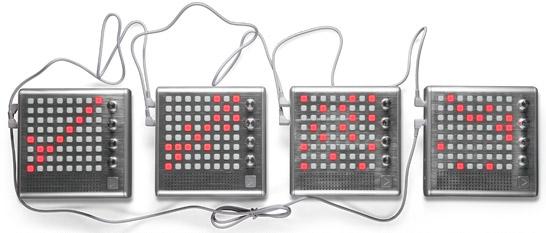
click thumbnail picture to open large picture (of the Blip) ...
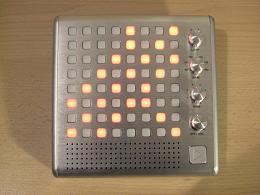 1- Bliptronic 1- Bliptronic
There have been a few vague references to "repurposing" the button matrix, after all, an array of 64 buttons,
each with an LED in it for about £40 is pretty tempting, or of 'circuit bending' the sound circuit.
I decided to have a go at wrecking one to see how easy it would be to use one for an idea I have been thinking
about for some time.
First things first though, before committing 'syntheside' on the Blip, these things have two modes (selected by the top
rotary control), either self-contained continuous (self-triggering) or run once and wait for an external trigger signal
(daisy-chain). What is the link signal that allows these things to be daisy-chained? can I trigger a Blip from a
synthesiser module or trigger a synth (maybe a sequencer) from the Blip?
On trying to trigger the Blip from an external DC signal, I found that it will reliably start with as little as 2.75v
and is 'level triggered' ie. applying pulse will start the Blip but applying a steady voltage will keep it running as
if it were in self-triggering mode.
Now for some more invasive stuff, what's inside? how easy is it to claim the button matrix?
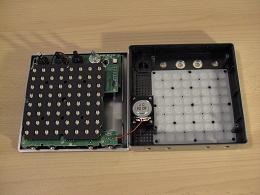 2-First View of internals 2-First View of internals
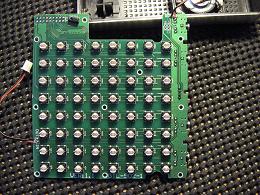 3- The Buttonboard topside 3- The Buttonboard topside
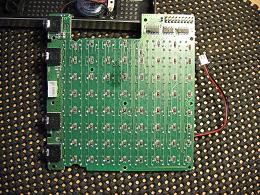 4- The Buttonboard underside 4- The Buttonboard underside
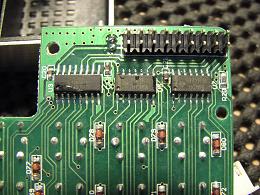 5- The Buttonboard electronics close-up 5- The Buttonboard electronics close-up
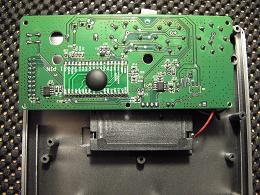 The Controlboard The Controlboard
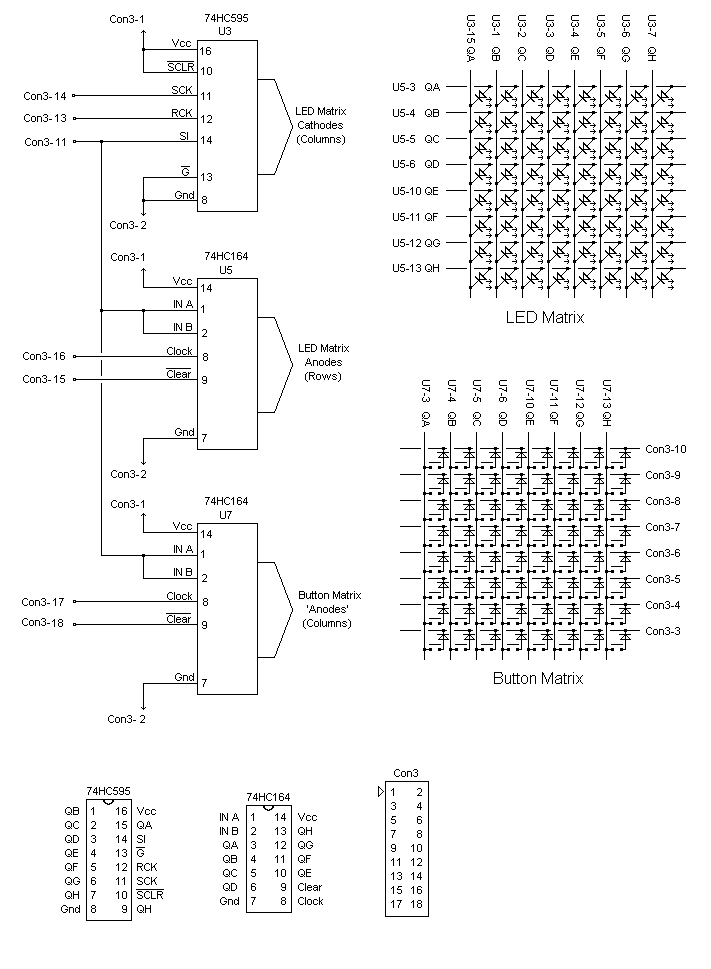 The Buttonboard circuit diagram The Buttonboard circuit diagram
This circuit diagram shows all the useful circuitry on the buttonboard, I have no interest in the trigger
in and out wires or audio connector feeding the headphone sockt and speaker, so they are omitted.
The pin-out numbering for the 18 pin connector is chosen to copy the ICs, all being numbered anti-clockwise
with pin 1 in the lower left corner in picture 5.
My next task on this project will be to set up a PIC microcontroller to drive the LEDs and read the buttons.
|